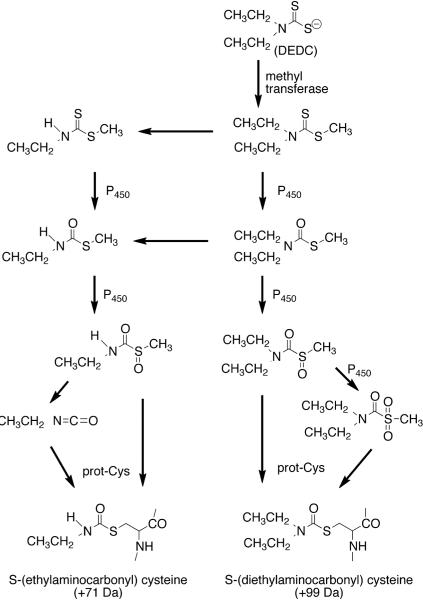Scheme 1.
Major metabolic pathways leading to protein adduct formation. N,N-diethyldithiocarbamate (DEDC) is S-methylated and undergoes several oxidation steps to generate the sulfoxide and sulfone metabolites capable of reacting with protein cysteine residues to form S-(diethylaminocarbonyl) cysteine adducts. Alternatively DEDC metabolites can be dealkylated and oxidatively metabolized to the N-monalkyl sulfoxide that can either react directly with a protein cysteine or undergo facile decomposition to ethylisocyante prior to reacting with a cysteine to generate the S-(ethylaminocarbonyl) cysteine adduct observed on Cys234 and Cys179 of E1.

